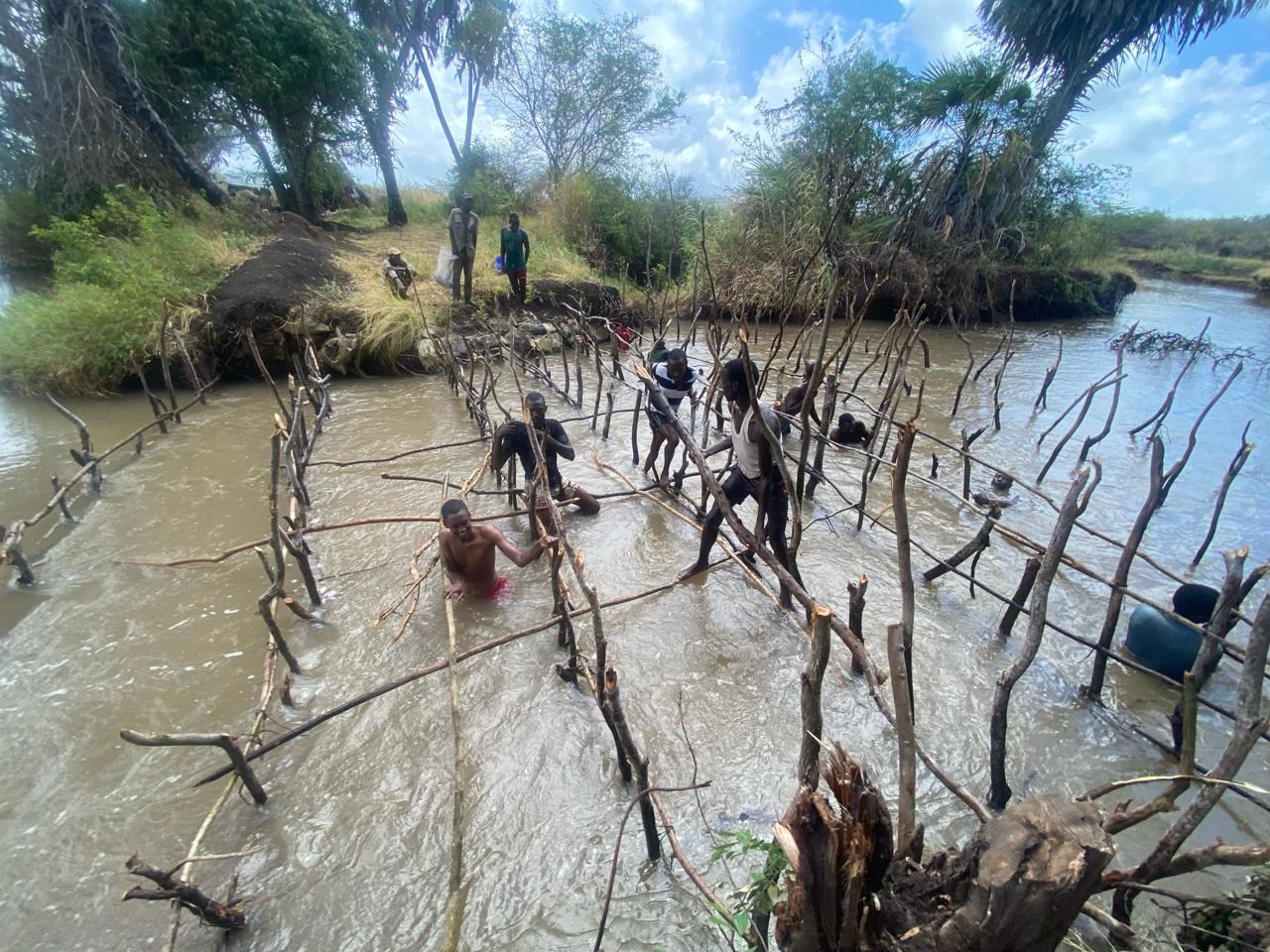
 Residents of
Chara location build a makeshift dyke using sand-filled sacks at Kalota Brook,
where seawater is seeping into the freshwater of River Tana /CHARLES MGHENYI
Residents of
Chara location build a makeshift dyke using sand-filled sacks at Kalota Brook,
where seawater is seeping into the freshwater of River Tana /CHARLES MGHENYIThe affected communities, mostly farmers, pastoralists and fishermen, said the intrusion of ocean’s salty water into the river has made life unbearable, with far-reaching impacts on drinking water, agriculture and fishing.
According to residents, the problem began over two decades ago but has intensified in recent years.
“The river water is now completely salty, unfit for drinking, farming, or even livestock,” Hassan Galgalo, a resident of Chara, said.
Communities in Chara, Kone Masa, Ozi, Kilelengwani and Dide Waride are among the hardest hit.
“Farming has been affected, residents of Ozi and Kilelengwani are rice farmers, while residents of Chara and Konemasa [plant] maize, watermelon, tomato and even rice,” he said.
Many now trek more 20km in search of fresh water as the river and its tributaries continue to record rising salinity levels.
At Kalota Brook, you will witness seawater visibly flowing deep into the river channels during high tide.
Residents have resorted to building makeshift dykes with wooden poles and sand-filled sacks in desperate attempts to block the sea from advancing inland.
Despite previous government pledges, little has been done to address the crisis.
Residents recall that in 2019, then Environment Cabinet
Secretary Keriako Tobiko toured the area and promised a permanent solution, but
no action has followed.
“The county and national governments need to build a strong dyke to stop the seawater from entering the river. Farming has collapsed, rice, maize, tomatoes, even fish, everything is gone,” Galgalo said.
Joseph Owino, another resident, confirmed that experts had earlier advised the construction of a barrier as the only sustainable way to prevent further intrusion.
Meanwhile, community leaders are urging the county government to
use available climate change funds to mitigate the crisis.
“We have more than Sh122 million annually from the World Bank under the climate change programme,” Boneya Kone, the chairperson of the Kipini West Ward Climate Change Committee, said.
“We appeal to the governor to allocate even a portion of this funding to build a dyke from Ozi to Kibokoni and Shirikisho.”
Residents like Said Bakombe from Ozi have appealed for urgent humanitarian aid, saying livelihoods are collapsing fast.
“We can’t farm, fish, or keep livestock. Our families walk long distances just to find fresh water,” he said.
He added, “For the last 10 days, we’ve been volunteering to block the seawater ourselves, but we need real help from our leaders.”
Yusuf Galicha, another resident, called on President William Ruto and all Tana River leaders to intervene before the situation spirals further.
“The people of Tana Delta are suffering. We need immediate and lasting solutions,” he said.
Instant analysis:
The Tana Delta crisis highlights the growing threat of climate change and rising sea levels on Kenya’s coastal communities. Seawater intrusion into River Tana has turned freshwater sources salty, crippling farming, fishing and livestock rearing, the area’s main livelihoods.












